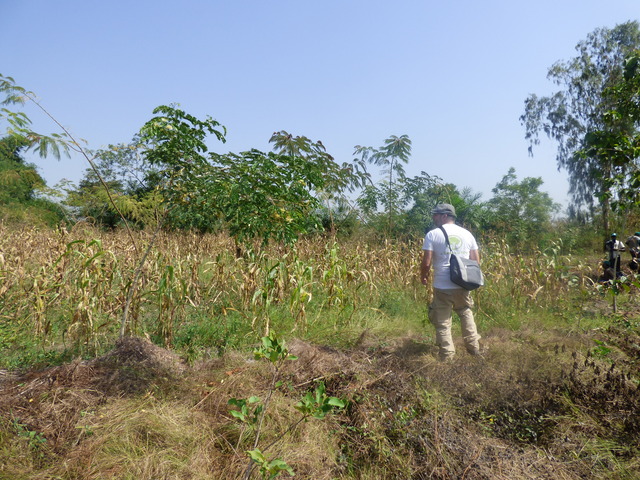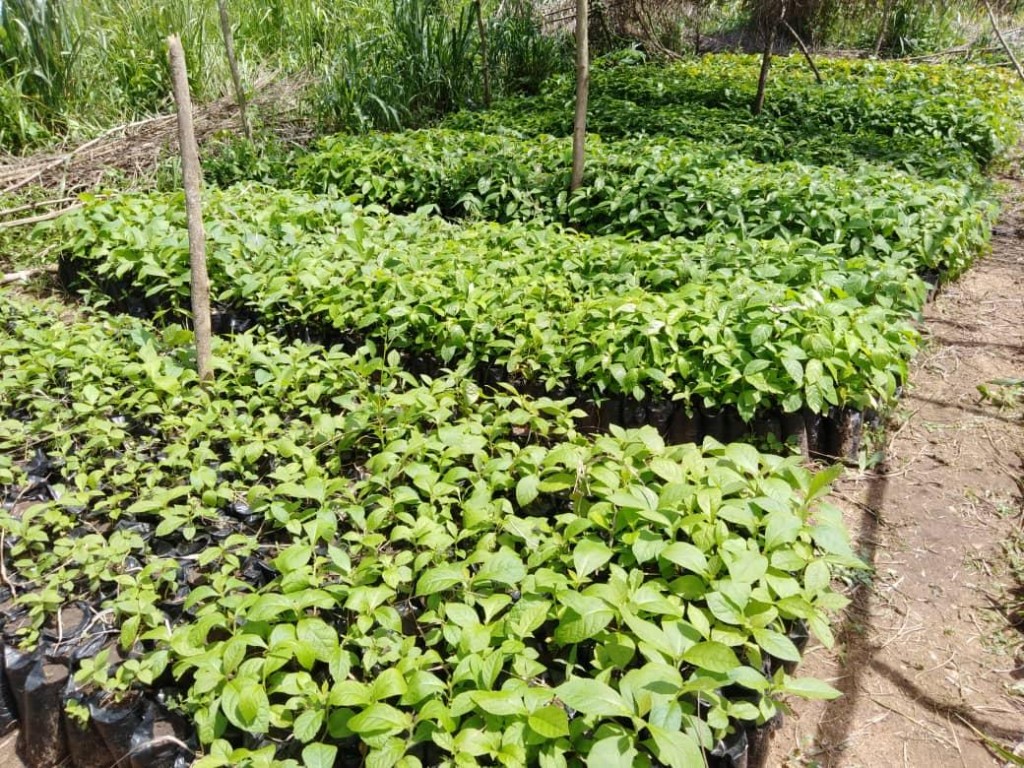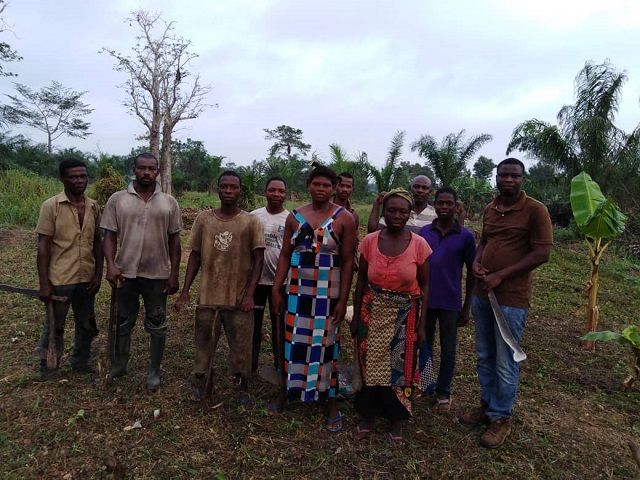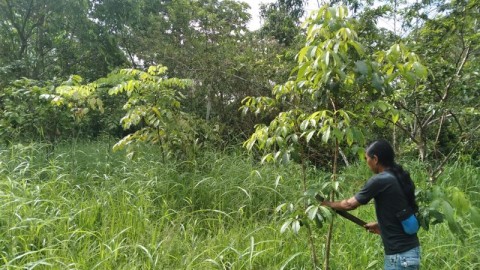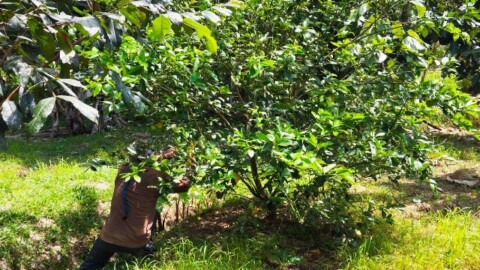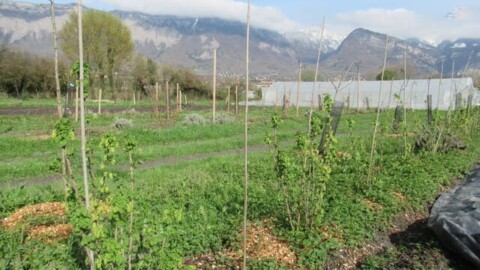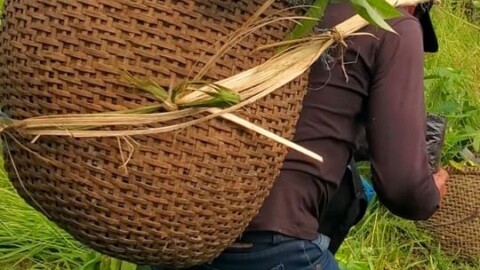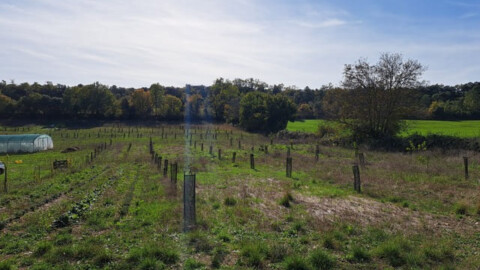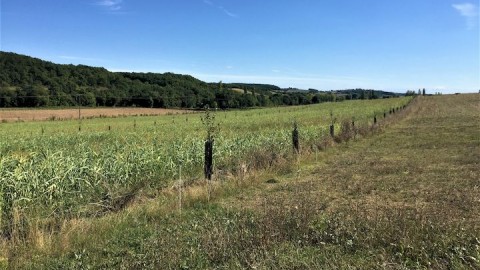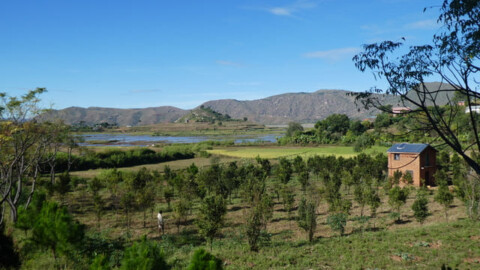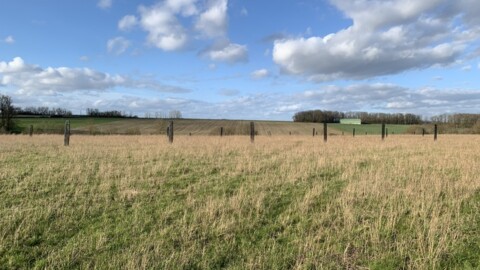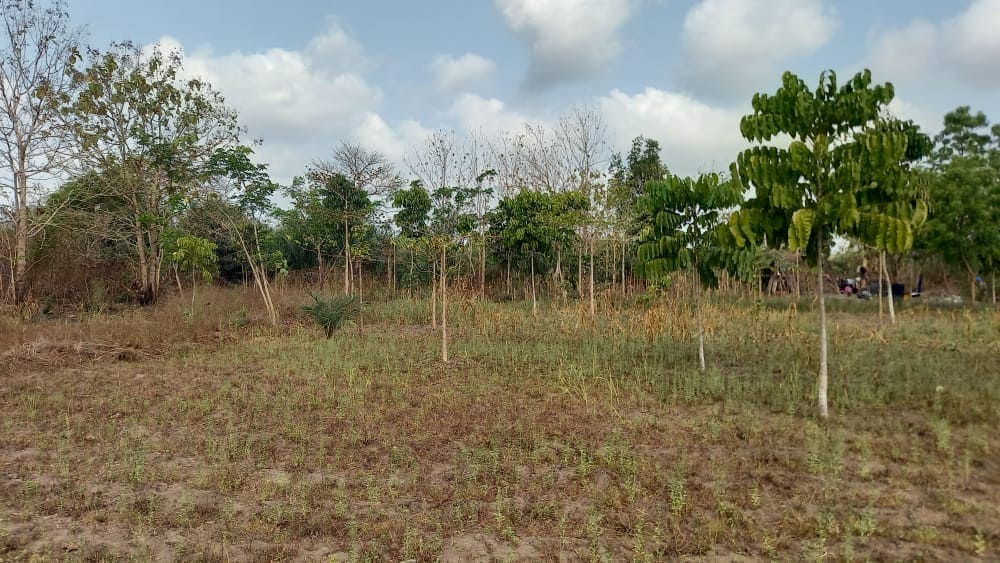
Kouaxoé, Togo, June 2022
The project aimed to plant agroforestry and forest trees in the Togolese village of Kouaxoé, located in the Zio river valley. In this small village of 600 inhabitants, the soil is acutely degraded and so largely infertile for subsistence crops. The villagers were also lacking firewood and timber.
The objective was therefore to plant 15,000 perennial trees with the help of 300 beneficiaries.
Between 2018 and 2022, the local teams of APAF Togo, A Tree for You‘s partner in the field, accompanied the project’s beneficiaries for various activities. The beneficiaries and local population gained awareness and received training on different topics related to climate change, soil degradation, and agroforestry with fertiliser and forest trees.
Following these awareness-raising and training sessions, groups of nurserymen/women were provided with the small equipment needed to start setting up a nursery.
Next, the seedlings were distributed among the beneficiaries, who then planted them on their plots. Three planting phases were needed for these beneficiaries to reach the target. This was due to the difficult weather conditions, especially the heavy rainfall, strong winds, and high heat, which took their toll on the young plants in the nursery. Nevertheless, these challenges failed to discourage the beneficiaries, who worked tirelessly to continue planting. In the third year of planting, the local population asked if they could plant citrus trees, which was not initially planned for the project but will generate extra income for the families. So, 1,000 orange trees were planted in the third year.
Given the high demand for firewood and timber by the beneficiaries, the project has planted more forest trees than agroforestry.
In total, the farmers planted and maintained 26,652 agroforestry, forestry, and fruit trees in Kouaxoe. This project benefits over 380 villagers in Kouaxoé.
| N° | Agroforestry and forest species | Kouaxoè |
| Cocoa or fruit trees | 1,000 | |
| 1 | Cacao forastero | 0 |
| 2 | Orange trees | 1,000 |
| Agroforestry trees | 11,828 | |
| 3 | Samanea samane | 1,173 |
| 4 | Albizia Stipulata | 1,027 |
| 5 | Terminala Ivoireinsis | 3,691 |
| 6 | Albizia lebbeck | 925 |
| 7 | Terminalia Superba | 5,012 |
| Forestry trees | 13,824 | |
| 8 | Tectonia Grandis | 12,424 |
| 9 | Khaya Grandifoliola | 1,400 |
| TOTAL | 26,652 | |
APAF Togo‘s technical teams monitored and maintained the seedlings planted, as well as assessing their survival rate, estimated at 75% in the village of Kouaxoé – so bringing the number of perennial trees for this project to 20,000. The loss rate is due to two phenomena: climate change, reflected in the low rainfall in the region in 2020 and 2021; and the transhumance of cattle near or on the planted plots, which has destroyed some trees.
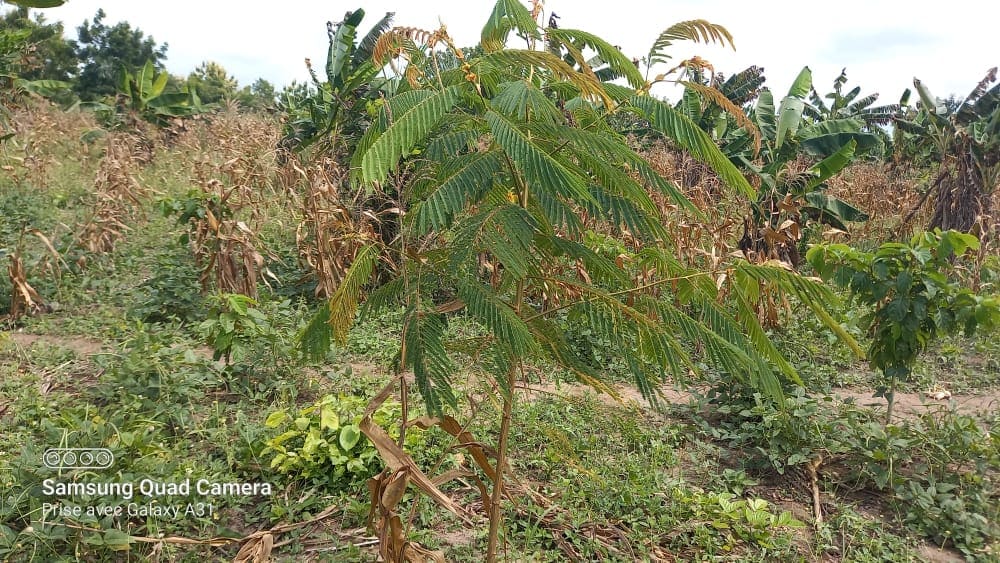
This project ends in 2022. This project was first funded by A Tree for You donors in 2018. It was one of the first projects funded via the A Tree for You platform. Thanks to donor support, it kicked off in 2019 with planting of the first trees, then continued this planting in 2020 and 2021. The last few years have been spent monitoring and maintaining the young trees.
The good news is that the project has delivered on its objectives, and even at times surpassed them:
| Indicators (Number) | Figures from the village of Kouaxoè
|
||||
|
Expected results |
2019 | 2020 | 2021 | Cumul | |
| Trained farmers | 300 | ± 300 | 80 | +380 | |
| Total trees planted | 25,500 | 14,337 | 8,815 | 3,500 | 26,652 |
| Perennial trees | 15,000 | – | – | ≈20,000 | |
| Cocoa or fruit trees | 0 | 0 | 0 | 1,000 | 1,000 |
| Agroforestry trees | 10,500 | 1,225 | 800 | 1,200 | 3,225 |
| Forestry trees | 15,000 | 13,112 | 8,015 | 1,300 | 22,427 |
Implementing this project in Kouaxoe has delivered the following benefits:
- Promotion of techniques and methodologies for producing quality food and cash crops in a sustainable and profitable way
- Availability of firewood in the agroforestry fields to women
- Limiting of external inputs like chemical fertilisers and synthetic pesticides through natural and sustainable soil fertilisation
- Diversified production, which boosts revenue
- Regulation of the water cycle and improved water resources
- Mitigation of climate change impacts


